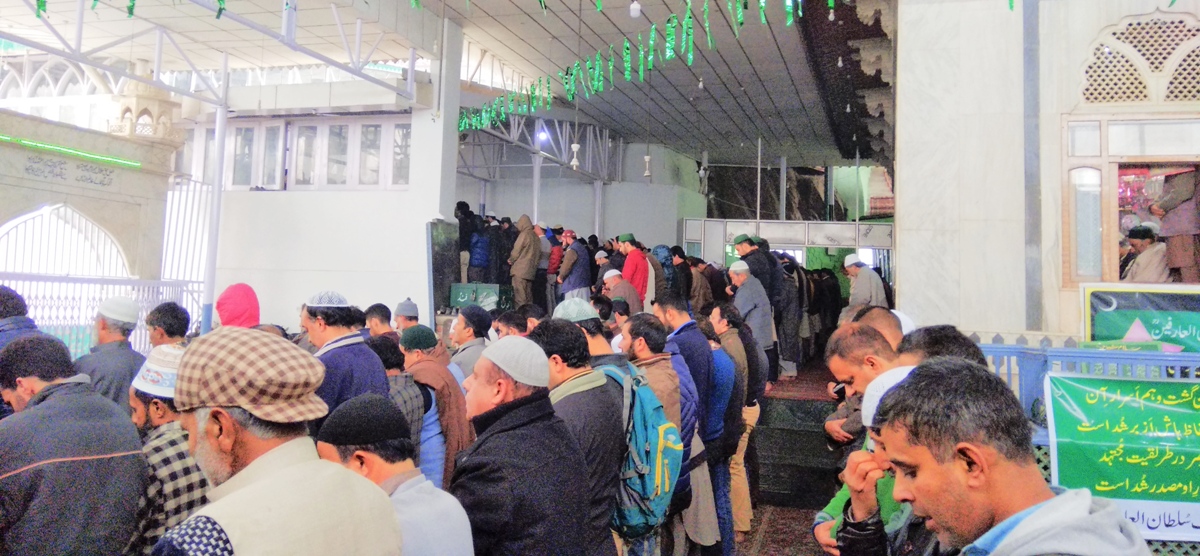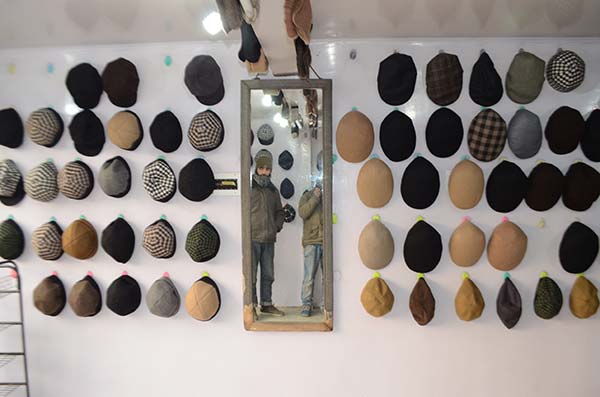Their firm belief that wishes are granted at shrines takes the form of a unique ritual. Devotees tie votives for whatever they wish and untie them when the wish is granted. Shazia Yousuf tells the story of wishes.

Her back is bent and hands tremble. In her right hand, she carries a bag of vegetables. Her left hand is placed on her lean back to balance her otherwise wobbly body. Not a single frown, however, appears on her face. Deep inside her sunken eyes, rests hope. Raja has come all the way from Dalgate to visit this shrine of Meer Syed Ali Hamdani at Fateh Kadal where she has tied a votive rag – Daesh in Kashmiri.
Stepping into the courtyard of the shrine, Raja offers a loud salaam.
Raja is confident that all her wishes would be granted because of the votive rag she has tied on latticed wooden railings of the shrine. Facing the railing, now hidden under a miscellany of these votive rags, Raja sits silent, takes a rosary out of her pheran pocket and starts counting prayers on its beads.
Raja’s eyes are closed, hopefully resting behind her glasses. Many women pass by without causing a single wink in them.
Hardly any votive rag matches with the other. From shimmering cloth to dull fabric, devotees use a variety of textile to make rags easily distinguishable. Few even use polythene. It seems that some have just started believing in this practice and hurriedly tied a votive. Different colours of yarn and threads could also be seen tied to the latticed railing. With the new rags overlapping the old ones, the lattice is barely visible. Some votive rags are even tied to door handles and window locks, away from the crowd in a desire of being easily noticed and attended first.
Raja stands up, goes near the windowsill and utters a conversing prayer. “Bezein ma laag, searie chay paiy, wen wantam kyah chum karun (Don’t behave like a stranger. You are familiar with everything. Tell me what I should do now?),” she says with a belief that some invisible authority is listening to her.
Are the prayers answered by tying a votive rag? “Why not? All decisions are made in these places,” Raja says.
Raja cannot recall the number of rags she has tied in her life. “First I would come as a girl, then as expecting mother, then mother, now as grandmother. Only wishes kept changing, belief is the same. Not a single prayer of mine has been left unanswered till date,” she says, coiling the hanging votive rag around her finger.
She won’t disclose her wish. She says that the votive loses power when one reveals the desire. “What can a grandmother yearn for?” she asks with a grin.
Below the votive rag of Raja, is tied another hope on the lattice. The rag is coiled over a metallic bangle that has loosened its knot. “Grant her wishes too,” yells Raja while tightening the knot for the unknown expectant.
Raja has left her home early in the morning to visit all her beloved shrines. It is afternoon when she sits inside the shrine at Khankaah. “First I went to the shrine of Naqashbandi Sahib, then to Dastgeer sahib, this is third one and before leaving for home I have to visit Makhdoom Sahib’s Shrine,” she says while preparing to leave.
Dressed in a contemporary outfit, Mubashira, a college student is sweeping the staircase of Makhdoom Sahab Shrine. She has tied a votive rag in the shrine and now waits for a miracle to happen in her coming results. “My friend had some skin ailment. She had scars all over her face. After doctors gave up, she tied a rag here and all the scars on her face are gone. Miracles do happen in these places, all you need to have is belief,” Mubashira says while dragging her broom across the surface of the stairs.
While Mubashira’s hope lingers over her tied rag, Mushtaq Ahmad has come to untie one. Draping his head with a handkerchief, he cuddles with one of the pillars and kisses the surface. Then sitting on his knees, he unties the knots of his rag. Mushtaq remembers the one he tied there, a unique one of dotted white cotton. He had tied it for success of his daughter. His wish has been granted and his daughter has qualified university entrance examination. “Bless her in future as well. Protect her from all evils,” he prays, evidently for his daughter, and leaves shrine after kissing the floor.
Beliefs may vary, but human yearnings are same.
Deepika is hesitant to step into the premises of Hazratbal shrine. Unlike Muslim women, her head is not covered, her hair spread on her shoulders and an atypical outfit segregates her from the crowd. This visibly makes her uneasy. With encouragements from her husband Vikram, she crosses the threshold. Married three years back, the couple has come from Delhi to tie a votive rag in the shrine. “We crave for a baby,” Deepika says and ties a rag after imitating the Muslim women.















